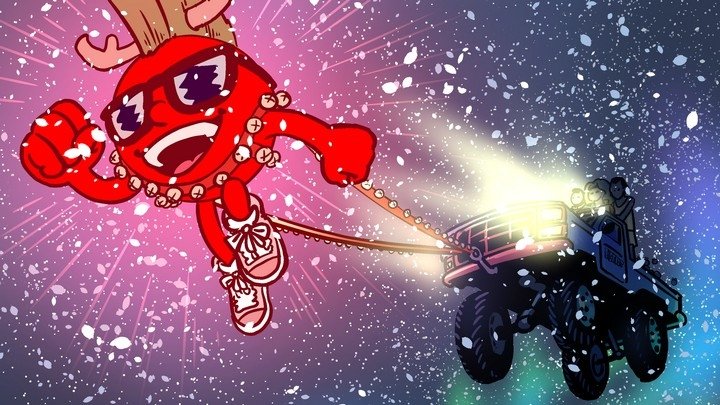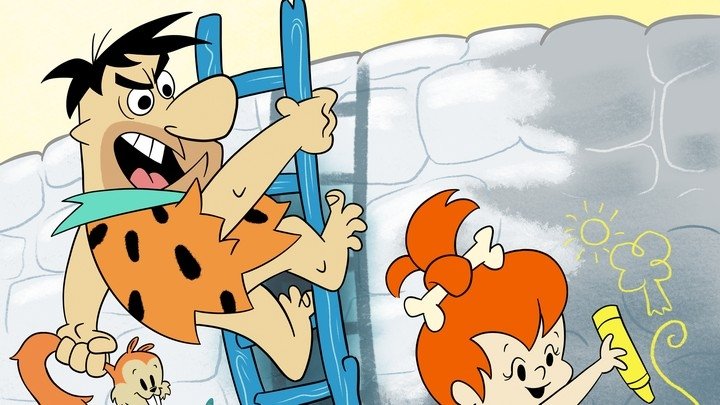Super NES Mini Countdown: #12 | Street Fighter II Turbo: Hyper Fighting
The best non-Genesis port of the best non-digitized fighting game of 1993.
Nintendo's Super NES Classic Edition mini-console arrives at the end of the month, and the Retronauts writing team has voted to rank the 20 classic games on the mini. Unlike last year's Classic NES Edition, the Super NES mini doesn't have a single dud on it, so think of this as a countdown from good to great—and they don't come much greater than the jewel in Capcom's crown, Street Fighter 2.
Previous entries:
- 20. Super Punch-Out!!
- 19. F-Zero
- 18. Kirby's Dream Course
- 17. Donkey Kong Country
- 16. Star Fox
- 15. Super Mario RPG
- 14. Secret of Mana
- 13. Super Mario Kart

12. Street Fighter II Turbo: Hyper Fighting
Dev.: Capcom
Publisher: Capcom
Genre: Fighting
Release date: July 1993 [JP] Aug. 1993 [U.S.] Aug. 1993 [EU]
What makes Super Street Fighter II Turbo: Hyper Fighting a worthy inclusion?
Street Fighter II is immortal
Street Fighter II defined a genre, spawned countless rivals and imitators, led the '90s arcade resurgence, helped turn the tide for Nintendo of America against the Sega Genesis influenced copyright law and made Capcom very, very wealthy. Street Fighter II accounts for two of the top ten highest-selling SNES games of all time, and Street Fighter II: The World Warrior for SNES remained Capcom's highest-selling game for almost two decades. Street Fighter's influence can be felt in modern games as diverse as Overwatch and Puyo Puyo Tetris..Street Fighter is a hair gel. Street Fighter's not merely a worthy edition to the SNES Classic lineup, it's the single most important and influential game in the SNES Classic lineup, without question.
Street Fighter is Super Nintendo
Anyone who was around during the SNES' heyday will have some degree of nostalgia for Street Fighter II — everyone had a favourite character, a favourite special move to spam, a favourite victory, a mortifying defeat, a flimsy excuse for why their game was better than Mortal Kombat that, deep down, they knew to be untrue. The game was ubiquitous; everyone spoke the language and every new opponent gave you a chance to develop your vocabulary. Street Fighter II was an inescapable and unforgettable part of early-'90s gaming and a SNES Mini without SFII would be thoroughly unessential.
Street Fighter II is everything fun about fighting games
Players brought up on more recent fighting games, including later Street Fighter games, might be surprised by just how straightforward Street Fighter II really is: There are no crazy mobility options, no comeback mechanics, no enhanced moves — Hyper Fighting doesn't even have a super meter — but rather than feeling deficient or underdeveloped, Street Fighter II feels... lean. Every character has their niche, and the concepts you'd expect to encounter while playing a modern fighting game are present here: defending, controlling space, applying pressure, reading and baiting the opponent, dealing with specific matchups, learning to lose and to hate losing, learning to really want to win. Matches go by very fast, so with the right mindset and a willing training partner, SFII is the ideal environment to develop and internalize the broader concepts that govern every fighting game you're ever likely to play.
Street Fighter II is packed with iconic character designs
Granted, many of those designs are heavily derivative of old kung-fu posters or manga characters, or reliant on clumsy cultural stereotypes, but that did little to diminish their appeal in 1991. Those original twelve World Warriors — Ryu, Ken, Chun-Li, Guile, Zangief, Dhalsim, E.Honda and Blanka, plus Balrog, Vega, Sagat and M.Bison — are now firmly entrenched in pop culture. Moreover, all the common fighting game archetypes you see today are still directly descended from individual SFII characters, conceptually and occasionally literally (the '90s arcade library is filled with third-rate Blanka/Zangief/Dhalsim wannabes). They look cool; they're well animated, and the animation acquits itself admirably on SNES; and they're able to convey a lot of personality via a relatively small pool of animations. What more could you ask for? (The New Challengers, I suppose... nah, screw 'em.)
The Sega Genesis Flashback already took Mortal Kombat off the table for SNES Mini...
...but there's no shame in settling for second-best.
Why Hyper Fighting? Isn't Japan getting the later revision, Super Street Fighter II? What's the deal?
Yes, the Super Famicom Classic Mini features Super Street Fighter II: The New Challengers, the third and final SFII port released for the SFC/SNES and one that most notably features additional characters (Cammy, Fei Long, T.Hawk and Deejay) that won't be accessible to Hyper Fighting players. On the flipside, Super is not an especially well-regarded revision by serious players, and it was released after the game had peaked in popularity, so many players of all skill levels hold Hyper Fighting in especially high esteem.
Why, then, did they decide to give a different version to each console? It's impossible to know exactly why this decision was made or by whom, but let me offer a little speculation. The arcade release of Hyper Fighting was an initiative spearheaded and designed by members of Capcom USA that was not fully supported by the original developers, particularly in regards to the increased game speed, so Super Street Fighter II consciously reverted to the original, slower game speed, both as a point of preference and as a power play against what some members of the team saw as unwanted meddling from outsiders. Ultimately, players preferred the higher speed, so Super Street Fighter II Turbo, a final revision designed primarily by younger members of the SFII team in Japan, was rushed to arcades in order to win back disappointed players. For that reason, it's possible that Capcom still perceives Hyper Fighting as "the American version" and split the releases accordingly, but we'll probably never know the truth.
Interesting facts about Street Fighter II Turbo: Hyper Fighting
Yes, there's a Street Fighter 1
...and no, it's not very good. It's not much to look at, its special moves are incredibly hard to perform, and the only playable characters are an oddly red-haired Ryu and his identical palette-swapped sidekick Ken, with the rest of the cast relegated to CPU-only status. The original arcade cabinet used pneumatic pressure pads in lieu of buttons, letting you dictate the strength of your on-screen punches and kicks by striking the pads with the appropriate amount of force, but these were prone to breaking and were eventually replaced by the three-punch, three-kick button layout that would be adopted by Street Fighter II. Despite these shortcomings, the game proved a modest success, and several of the creative leads, including director Takashi Nishiyama, were poached by arcade rival SNK to work on new and original games in the same vein, starting with 1991's Fatal Fury: King of Fighters. (Nishiyama's company Dimps ended up running point on the development of Street Fighter IV some 20 years later.)
Street Fighter '89?
The true origins of Street Fighter II lie not with the original Street Fighter but with the 1989 arcade brawler Final Fight; the team that was assigned the task of developing a new Street Fighter game made no effort whatsoever to adhere to the format set by the original game and instead took their cues from the then-popular Double Dragon series, eventually ditching the "Street Fighter '89" name entirely. After Final Fight proved to be a hit, Capcom USA made a more forceful request for an authentic Street Fighter sequel from the same team and so, informed by the sensibilities honed during the production of Final Fight, they made the game we now know as Street Fighter II. (The two universes would formally merge with the inclusion of Final Fight characters Guy and Sodom as playable fighters in 1995's Street Fighter Alpha.)
Can you feel the storm?
The little-known Japan-only Street Fighter II: Complete File book contains several early character concepts drawn by legendary designer Akira "Akiman" Yasuda, including many completely original character designs that didn't make the cut. Highlights include a riot cop, a Kenshiro wannabe, a Ugandan tribesman and, perhaps most notably, a rope-wielding heavy-metal wrestler whose over-the-top design has been surreptitiously inserted into several crowdfunded games, including Shovel Knight.
Master and Commander
The release of Street Fighter II on SNES prompted a number of third-party hardware manufacturers to create controllers that catered specifically to fighting game players. Perhaps the best-regarded of those controllers was the venerable Hori Fighting Commander for Super Famicom, a controller that continues to be tweaked and reworked for current-gen consoles to this day, and you'll soon be able to import a wireless reissue of the original SFC controller that's fully compatible with SNES Mini (and Wii U, and Wii).
.
Quick, change the channel!
The Street Fighter movie starring Jean-Claude Van Damme is infamous for bearing only the faintest resemblance to the source material, but it wasn't the first movie to hilariously misinterpret the Street Fighter universe—that honour goes to Future Cops, a 1993 Hong Kong action-comedy production starring legally-distinct versions of the Street Fighter cast and an absurd plot centered on time travel and an invasion by... y'know what, just watch the movie, you won't regret it:




